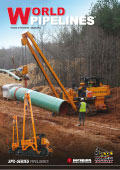Editorial comment
I write this in the grip of Olympic Games fever. In what has already been a profitable year in the UK for retailers of Union Jack flags (the Queen’s Diamond Jubilee celebrations providing plenty of opportunities for cheer earlier in the year), we are now served up the main course of the Summer: the London 2012 games.
Register for free »
Get started now for absolutely FREE, no credit card required.
It’s not just the warm glow of patriotism and pride that has me waxing lyrical (although there is something very special about welcoming the world to your home town); it’s the many feats of logistical and engineering prowess that are involved in staging such an event. This is something that can be appreciated not only by the host nation, Great Britain, but all over the globe. The Olympic Delivery Authority (the public body responsible for developing and building the new venues and infrastructure for the Games) embraced the Herculean task of building an Olympic park in disused land in east London and has worked for seven years on preparing the nation’s capital for the games.
A workforce of some 200 000 has been needed for the London Games, including paid workers, volunteers and contractors. According to the Institute of Engineering and Technology (IET), 25 000 people worked on the Olympic Park for five days or more during its construction, with 6449 people working on it at the peak of its construction in December 2010. Of these, more than one in five were resident in the five host boroughs of east London (Greenwich, Hackney, Newham, Tower Hamlets and Waltham Forest) and more than 55% were resident in London. More than one in 10 were previously unemployed. Jobs brokerage systems, training schemes, apprenticeships, a ‘women in construction’ venture and other such initiatives have given thousands of people employment.
The result? 32 Olympic sports venues completed, with a total capacity of 700 000, including the 80 000 capacity Olympic Stadium. The stadium is the lightest Olympic stadium ever built and features 532 floodlights in 14 lighting towers so that new freeze-frame HD television technology can capture every fraction of a second’s action in this first ever truly ‘digital’ games. And imagine how excited I was when I stumbled upon a pipeline-related fact – part of the supporting structure of the roof is formed from 2500 t of steel tubing recycled from old gas pipelines.
In this month’s bumper issue of World Pipelines (the biggest to-date), we celebrate the people who get things built in the pipeline industry, those who turn proposals, drawings, plans and calculations into reality.
In the annual Contractors’ Directory (which begins on p. 18), a record 38 contractors report on their respective pipeline engineering activities in the past year, chronicling a wide range of works, onshore and offshore, all over the world. It’s an enlightening look into the various engineering feats in the pipeline industry: read on for world record breaking direct drillings, innovative deepwater coatings systems, impressive welding achievements and many more specially engineered solutions for pipeline projects.
As proud international media partner to the International Pipe Line & Offshore Contractors Association (IPLOCA), World Pipelines will be supporting this year’s annual convention in Istanbul (10 – 14 September), where association members from countries all over the world will no doubt be comparing gold medals, as well as their own, hard-won, pride-of-place pipeline engineering achievements.


